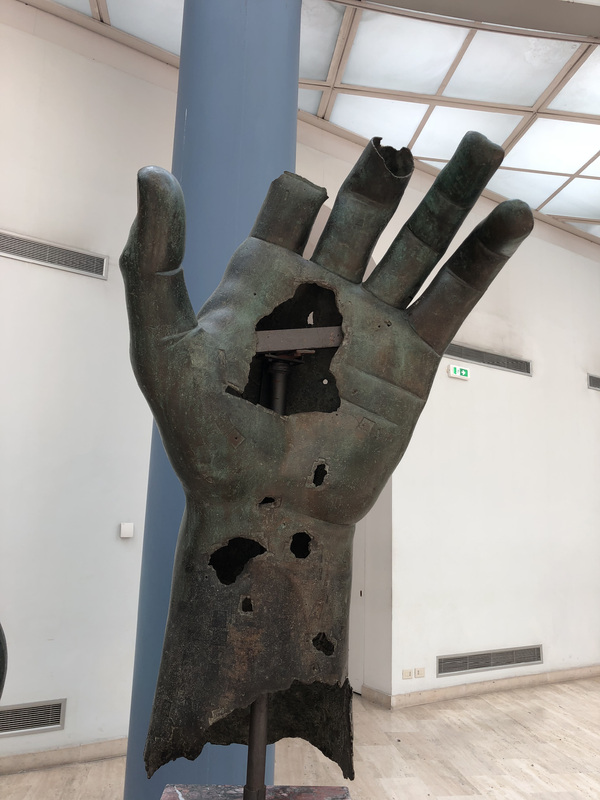Pieces of a bronze Constantine
Type:
Sculptures
Date:
Fourth century
Location or Findspot (Modern-Day Country):
Italy
Medium:
Bronze,
Gilt-bronze
Dimensions:
head H 1.7 m ,
finger L 38 cm
Description:
At least two colossal figures of Emperor Constantine I were erected in Rome in the fourth century. In one, the head and extremities were carved of marble; in the other, shown here, these parts were cast of bronze using the lost-wax method and then gilded. The head, left forearm and hand—minus the palm, which originally supported the preserved orb—and parts of two fingers were displayed in the papal collection outside the Lateran Palace until 1471, when Pope Sixtus IV donated them to the Roman public. In 2018, the missing part of Constantine's left index finger was rediscovered in the Louvre Museum, where it had been catalogued as a toe. Based on the length of the finger fragment (38 cm), the original statue would have been about 12 m tall if it were standing, but it may have been an enthroned or equestrian figure. Despite the youthful, idealized features, the head (1.7 m) resembles Constantine's image on his late coinage, and it is possible that the statue was a commemorative portrait made after the emperor's death.
Relevant Textbook Chapter(s):
2
Image Credits:
Wikimedia Commons; Linda Safran; Musée du Louvre




